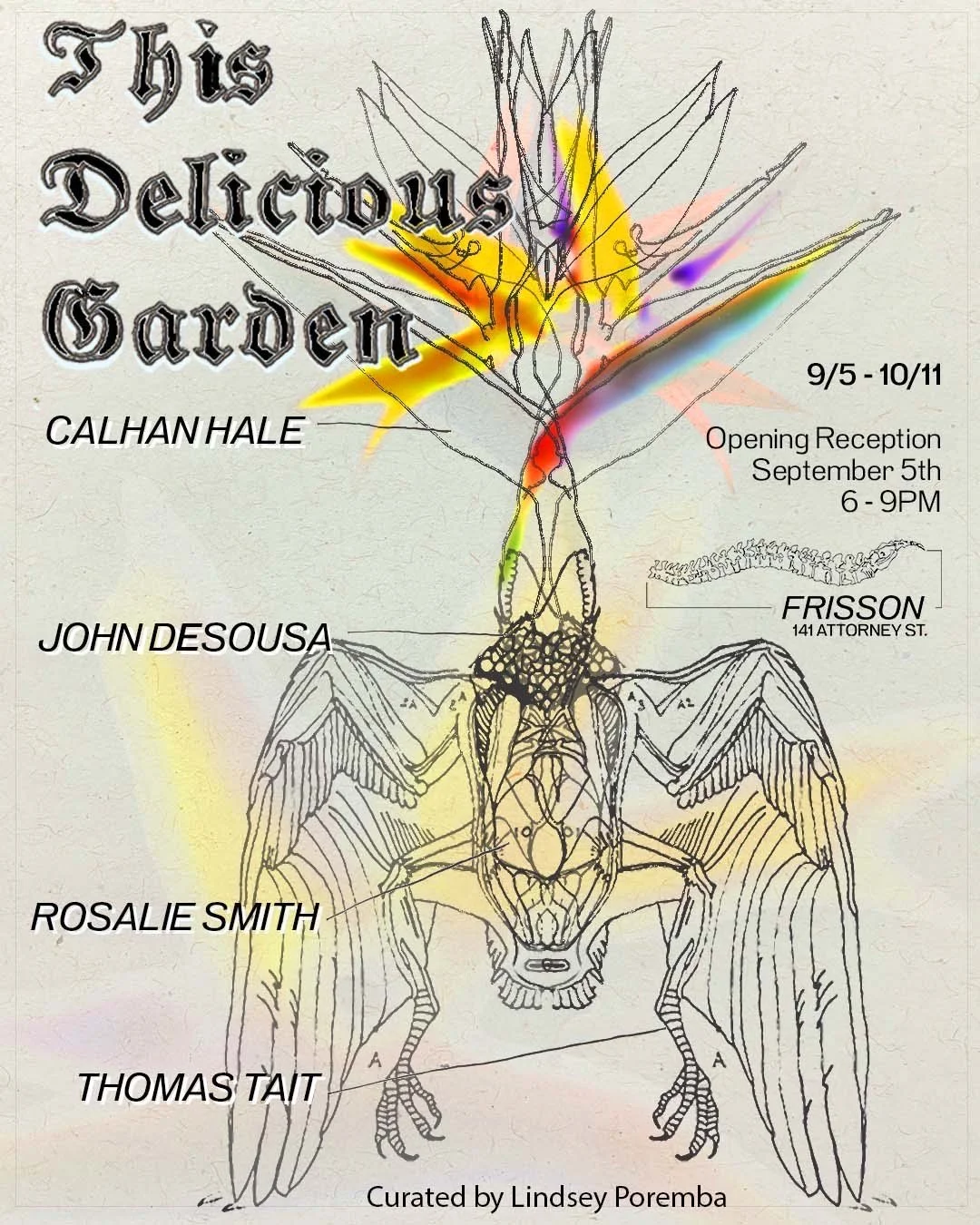THIS DELICIOUS GARDEN *
THIS DELICIOUS GARDEN *
THIS DELICIOUS GARDEN
September 05 - October 11, 2025
Opening Reception: September 05, 6pm - 9pm
Artists: John DeSousa, Calhan Hale, Rosalie Smith, Thomas Tait
Curated by: Lindsey Poremba
This Delicious Garden takes its title from an omission. In her 1818 novel Frankenstein, Mary Shelley quotes John Milton’s 1667 Paradise Lost in her epigraph:
Did I request Thee, Maker, from my clay/To mould me man? Did I solicit thee/From darkness to promote me …
Shelley articulates Frankenstein’s mortal predicament through the words of Adam. In Paradise Lost, Adam questions God, “Did I solicit thee/From darkness to promote me, or here place/In this delicious garden? …”, while lamenting the loss of Paradise.
Following Shelley back to Milton returns us into “this delicious garden.” These words, quoted, reimagined, and rearranged, resonate with the roles of choice and chance in our found physical and digital landscapes. Presenting the work of four artists, This Delicious Garden considers grotesque dichotomies after Shelley and Frankenstein: utopia and dystopia, technology and subsequent technofear, the artificial and the natural, and the animation of the inorganic, and the decay of the organic. Seen together, these artists' works become a new, hybridized ‘garden,’ of cross pollination, unexpected blooms, and invasive weeds.
John DeSousa recontextualizes images sourced from his photography practice, AI generation, and the internet. These images, which may be experienced as fleeting, artificial, or mass-produced, further dislocate from their obscured origins into layered textiles. DeSousa encourages a critical understanding of cultural production and its imagery, while blurring the boundaries between natural and artificial, digital and physical realms.
Calhan Hale converts familiar signifiers of landscape, architecture, and other forms into uncanny collages. Disparate moments–perhaps seen on a walk–are combined, and their contexts subsequently disrupted. Hale creates new visual relationships in her work through means of distortion, saturation, and attention.
Rosalie Smith’s sculptural works incorporate found objects: layered details hint at past personal and unknown narratives, re-imagined within a not-so-distant future dystopia. In these surreal works, the human body melds with artificial elements, playing with ideas of function and obsolescence, as well as our relationship to the objects around us.
Thomas Tait’s work extends the human gesture, combining the often opaque role of technologies with performance. In their own words, Mechano-Vegetal World is a “layered ecosystem of different animacies.” Living elements of moss and vegetables merge with technical apparatuses. Far from an ecosystem of mechanized efficiency, upon closer look, a chain of interactions leads to the small motions of marionette puppets.

